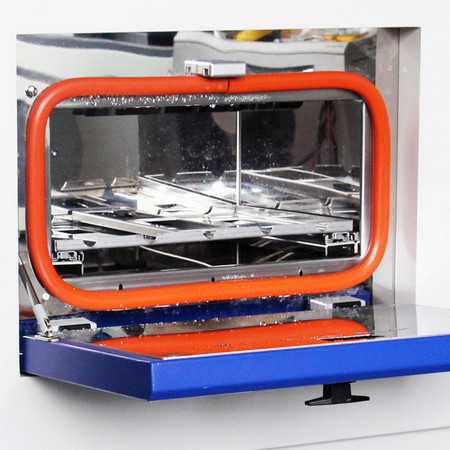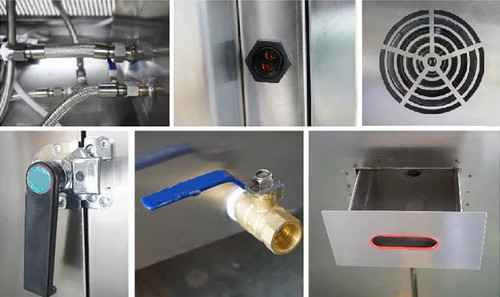A Deep Dive Into Air-Cooled Xenon Lamp Weathering Test Chamber
An air-cooled xenon lamp weathering test chamber is a specialized device used to simulate accelerated weathering conditions on materials and products. It is commonly used in industries such as automotive, aerospace, coatings, textiles, and plastics to evaluate the durability and performance of materials when exposed to sunlight and other environmental factors over an extended period.
Let's take a deep dive into the key features, working principles, and applications of an air-cooled xenon lamp weathering test chamber:
Key Features:
1.Xenon Lamp: The chamber is equipped with a xenon lamp as the primary light source. Xenon lamps emit a broad spectrum of light, including ultraviolet (UV), visible, and infrared (IR) wavelengths, which closely mimic natural sunlight.

2.Air Cooling System: Unlike water-cooled chambers, air-cooled chambers utilize fans and heat exchangers to dissipate the heat generated by the lamp during operation. This cooling system ensures stable and consistent test conditions.
3.Controlled Environment: The chamber provides precise control over various environmental parameters, including temperature, humidity, and light intensity. This allows researchers to simulate different climate conditions and study their effects on materials.
4.Specimen Mounting: Specimens or products to be tested are mounted on holders or racks within the chamber, ensuring uniform exposure to the light and environmental conditions.
5.Safety Measures: Xenon lamp chambers incorporate safety features to protect operators and prevent damage to the chamber. These may include interlocks, emergency stop buttons, and temperature monitoring systems.
Working Principles:
1.Light Exposure: The xenon lamp emits high-intensity light that closely replicates the solar spectrum. The light passes through filters to control the intensity and spectral distribution according to specific testing requirements.
2.Temperature Control: The chamber's temperature control system maintains a constant temperature throughout the test duration. The temperature can be set to simulate different climates, such as tropical or desert conditions.
3.Humidity Control: Some chambers have the ability to control humidity levels to simulate specific environmental conditions. Humidity can be adjusted to mimic various climates or specific moisture exposure scenarios.
4.Test Cycles: Weathering tests often involve exposing specimens to a series of alternating light and dark cycles, simulating day and night conditions. These cycles help evaluate the effects of light exposure, temperature variations, and moisture on the materials.
5.Data Monitoring: The chamber is equipped with sensors to monitor and record various parameters such as temperature, humidity, light intensity, and test duration. This data is essential for analyzing the performance and degradation of materials over time.

Applications:
1.Material Testing: Air-cooled xenon lamp chambers are used to evaluate the durability, color fastness, and degradation of materials like paints, coatings, textiles, and plastics when exposed to sunlight and other environmental factors.
2.Product Development: Manufacturers use these chambers to assess the performance and longevity of products under accelerated aging conditions. It helps them optimize formulations, select appropriate materials, and ensure compliance with industry standards.
3.Quality Control: Weathering test chambers aid in quality control by simulating the effects of long-term outdoor exposure in a short period. This allows manufacturers to identify potential issues and make improvements before products are released to the market.
4.Research and Development: Scientists and researchers utilize weathering test chambers to study the degradation mechanisms of materials, investigate the impact of specific environmental conditions, and develop new materials with enhanced durability.
In summary, air-cooled xenon lamp weathering test chambers provide a controlled environment for accelerated weathering testing. They simulate sunlight exposure, temperature variations, and moisture conditions to evaluate the durability and performance of materials. These chambers are invaluable tools in industries that rely on understanding how materials and products withstand outdoor
2023-05-10 10:24
- Related News
The importance of battery internal resistance testing in the battery manufacturi
Application and structural principle of high and low temperature test chamber
Application of Small Coating Machine in Polyimide Slurry
Principles and selection methods of laboratory incubators
Evaluation of Moisture Absorption and Rapid Drying Performance of Textiles by Na
Liquid Moisture Management Tester
Paper ring compression strength tester standards
